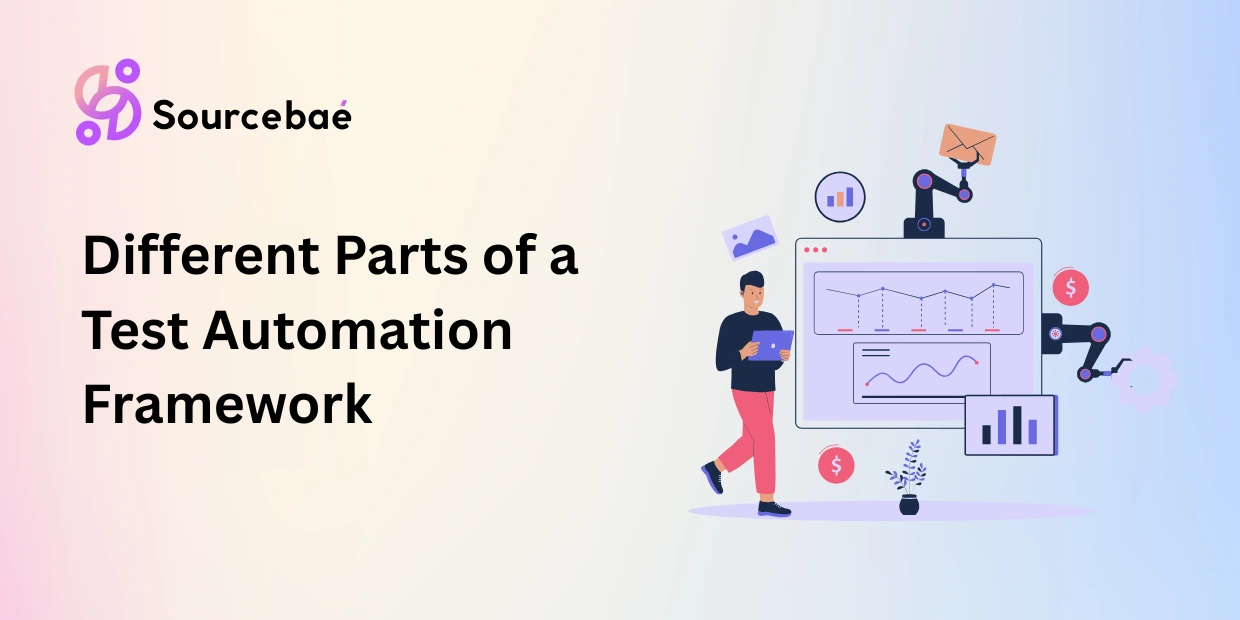In the fast-paced world of software development, ensuring the reliability and quality of your applications is paramount. Test automation frameworks have emerged as indispensable tools in achieving this goal. However, to harness their full potential, it’s essential to understand the different parts of a test automation framework and how they work together seamlessly. In this article, we will delve into each component, shedding light on their roles and significance, while offering valuable insights from the realm of software testing.
The Core Components
Test Scripts
Test scripts serve as the backbone of any test automation framework. These are sets of instructions written in a programming language that specify the actions to be taken during testing. Test scripts are responsible for interacting with the application under test and verifying its behavior.
Test Data
Accurate and diverse test data is crucial for comprehensive testing. This component includes the input data required to execute test cases effectively. Well-structured test data ensures that the automation framework can simulate real-world scenarios, enabling robust testing.
Test Execution Engine
The test execution engine is the powerhouse of the framework. It orchestrates the execution of test scripts, manages test data, and reports the results. A robust execution engine can run tests across multiple environments and configurations.
Test Reporting
Effective reporting is vital for assessing the test results and identifying issues. The reporting component generates comprehensive reports that highlight the pass/fail status of test cases, along with detailed logs and screenshots for further analysis.
Test Framework Library
The test framework library consists of reusable functions and modules that simplify test script development. This library streamlines the creation of test cases, reduces duplication of code, and enhances maintainability.
Supporting Elements
Test Environment Setup
Creating a controlled testing environment is essential to ensure consistency in test results. This component involves configuring hardware, software, and network settings to mimic the production environment.
Test Case Management
Managing test cases efficiently is a critical aspect of test automation. This component encompasses test case design, storage, and version control, ensuring that test cases remain up to date and organized.
Continuous Integration (CI) Integration
Integrating the test automation framework with CI tools like Jenkins or Travis CI automates the testing process. This integration ensures that tests are executed automatically whenever there are code changes, promoting a continuous testing approach.
Test Maintenance
Software evolves, and so should your test automation framework. Test maintenance involves updating scripts, test data, and configurations to adapt to changes in the application.
Test Execution Scheduling
Scheduling test executions at specific times or intervals is essential for unattended testing. This component enables running tests during non-working hours, optimizing resource usage.
Error Handling Mechanism
No software is flawless, and errors may occur during testing. An effective error handling mechanism detects issues, captures diagnostic information, and reports them for analysis.
Test Version Control
Managing different versions of test scripts and test data is crucial for tracking changes and ensuring traceability. Version control allows you to revert to previous versions if issues arise.
Also read: Test Automation Frameworks: Types, Benefits & Easy Examples (2025 Guide)
FAQs
Q: What is the role of the test execution engine?
A: The test execution engine is responsible for running test scripts, managing test data, and generating test reports. It coordinates the entire testing process.
Q: Why is test data important in test automation?
A: Test data is essential for creating realistic test scenarios. It ensures that the application is tested under various conditions and provides valuable insights into its behavior.
Q: How can I ensure my test automation framework remains up to date?
A: Regularly review and update test scripts, test data, and configurations to align with changes in the application. Implement version control to track modifications.
Q: What is the benefit of integrating a test automation framework with CI tools?
A: CI integration automates the testing process, allowing tests to run automatically whenever there are code changes. This speeds up feedback and promotes a continuous testing approach.
Q: Is error handling necessary in test automation?
A: Yes, error handling is crucial. It detects issues during testing, captures diagnostic information, and reports them for analysis and resolution.
Q: How can I optimize test execution scheduling?
A: Schedule test executions during non-working hours to maximize resource usage. This ensures that tests do not disrupt regular development activities.
Conclusion
Understanding the different parts of a test automation framework is key to unlocking its potential for efficient software testing. Each component plays a vital role in ensuring that your tests are comprehensive, maintainable, and adaptable to changing software environments. By harnessing the power of these elements, you can elevate the quality of your software and deliver reliable applications to your users.
READ MORE: Pros and Cons of Microsoft BI and SAP BI






